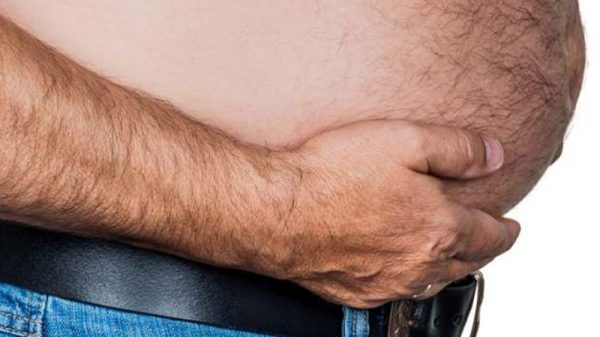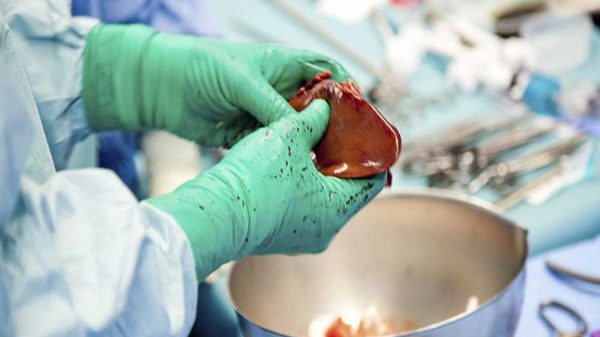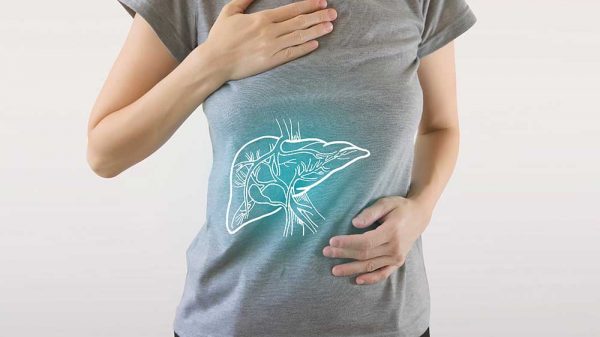If you’ve been diagnosed with liver disease, it’s essential to know about hepatic fibrosis. Hepatic fibrosis is a stage of liver disease progression that leads to the accumulation of scar tissue. Read on to find out everything you need to know about hepatic fibrosis.
What Exactly Is Hepatic Fibrosis?
Hepatic fibrosis is synonymous with liver fibrosis. Fibrosis is a term that describes the production of more rigid tissue that resembles connective tissue or collagen. These changes do not arise spontaneously but instead due to injury, such as chronic inflammation. Collagen and other fibrous materials collect in the extracellular matrix, which is the area outside of liver cells or hepatocytes. Specifically, the damaged liver begins to produce myofibroblasts, which have characteristics of muscle tissue and connective tissue.
A good example to consider is the body’s reaction when we sustain a cut or external injury. What happens when we sustain an injury? With a substantial injury, the body works to heal the damage while producing scar tissue. The same concept applies to liver damage and the body’s response to addressing the damage.
Causes of Hepatic Fibrosis
Many conditions cause liver injury and contribute to the pathogenesis of liver fibrosis.
Alcoholic Fatty Liver Disease
Fatty liver disease is a liver condition that describes the accumulation of fat cells within liver tissue – a process also called steatosis. For alcoholic fatty liver disease, alcohol abuse is the cause of fat accumulation in the liver. Alcohol is an inflammatory substance for the liver and produces a state of oxidative stress in liver tissue when consumed in excess.
The liver is responsible for metabolizing alcohol into nontoxic compounds so that the body can process and excrete them. Constant bombardment with alcohol irritates the liver, leading to the development of liver disease over time.
Nonalcoholic Fatty Liver Disease
Nonalcoholic fatty liver disease (also referred to by its acronym NAFLD) is differentiated from alcoholic fatty liver disease by the root cause. Nonalcoholic fatty liver disease develops due to the chronic consumption of unhealthy foods like sugar, saturated fat, and processed foods.
Nonalcoholic fatty liver disease also correlates with metabolic conditions like obesity, insulin resistance, and type 2 diabetes. The fat buildup in healthy liver tissue is intrahepatic, meaning that fat particles accumulate within liver cells, not between them.
Nonalcoholic Steatohepatitis
Nonalcoholic steatohepatitis (also known as NASH) is a progression of nonalcoholic fatty liver disease. If nonalcoholic fatty liver disease continues untreated, fat accumulation in the liver will lead to an inflammatory state in liver tissue. Liver cells will begin to produce inflammatory particles called cytokines. Cytokines are inflammatory cells of the immune system that play a pivotal role in worsening inflammation. (1)
Viral Hepatitis
Chronic viral hepatitis may cause inflammation, damage, and liver fibrosis over time. Hepatitis A and hepatitis B are less common in the United States, although they can occur chronically and cause inflammation. Hepatitis C, on the other hand, is more common and may result in chronic inflammation and subsequent liver fibrosis. Chronic hepatitis can lead to the development of liver fibrosis and cirrhosis.
Congenital Hepatic Fibrosis
Congenital hepatic fibrosis is a condition that is genetic in origin. Individuals born with congenital hepatic fibrosis have bile ducts in the hepatic portal system that are shaped differently than they should be. Bile ducts are responsible for carrying digestive fluid between the liver and gallbladder and to the small intestine.
Moreover, congenital hepatic fibrosis is characterized by abnormalities in the structures of portal tracts, which are responsible for securing blood vessels in the liver. Scarred and damaged biliary ducts and portal tracts inhibit normal blood flow and damage the liver and related organs.
Cholangitis
Cholangitis describes inflammation of bile ducts, similar to congenital hepatic fibrosis. However, cholangitis occurs acutely as a result of a bacterial infection. The condition can usually be successfully treated with antibiotics.
Autoimmune Hepatitis
Autoimmune hepatitis may be a root cause that leads to liver fibrosis over time. Autoimmune hepatitis occurs as a result of a dysfunctional immune system. The immune system typically targets harmful agents such as invading viruses, bacteria, and other pathogens, in order to prevent or clear an invention. The immune system is also responsible for recognizing the growth of malignant or cancerous cells and inducing apoptosis (cell death) before these cells can actually cause cancer.
However, autoimmune diseases result from an immune system malfunction. Instead of attacking harmful cells or invading pathogens, the immune system mistakenly targets and damages healthy tissue. Autoimmune disorders may impact all areas of the body, including the nervous system and skin. In the case of autoimmune hepatitis, the immune system targets healthy liver tissue and causes chronic inflammation. Over time, autoimmune hepatitis may cause a progression to fibrosis and cirrhosis.
Hemochromatosis
Hemochromatosis is an inherited disorder that affects the processing of iron in the body. Individuals with hemochromatosis are unable to process iron throughout the body effectively. Consequently, iron accumulates in various places throughout the body, including the liver. Over time, continued iron deposits cause inflammation and damage in the liver that can lead to liver fibrosis.
Progression of Liver Fibrosis
If the liver continues to be damaged, liver fibrosis will continue. Advanced fibrosis causes a substantial amount of scarring in the liver, and once healthy tissue becomes hardened. These hardened areas of the liver are no longer functional. Large parts of the liver are no longer able to effectively and efficiently carry out metabolic processes and detoxification of compounds.
The progression of fibrosis leads to liver cirrhosis when hardened scar tissue begins to take over normal liver tissue. Because liver cirrhosis is a more progressed form of liver disease, it is also characterized by more severe symptoms. If you have a cirrhotic liver, you may experience jaundice, liver pain, portal hypertension, edema of the extremities, ascites, and weight loss.
Chronic fibrosis and cirrhosis indicate that your liver has sustained considerable damage that compromises liver function. Chronic liver disease raises the risk of developing hepatocellular carcinoma (liver cancer) and liver failure.
How Is Liver Fibrosis Diagnosed?
There are numerous tests that physicians can do to evaluate the health of your liver. Physicians often administer a blood test to evaluate the levels of liver enzymes in the blood. Elevated liver enzymes indicate inflammation in the liver.
Imaging tests also reveal valuable information about the liver. Magnetic resonance imaging (MRI), computed tomography (CT) scans, and ultrasound technology can reveal information about the health of your liver. These imaging tests yield information about the fat content of the liver, the texture of the liver, blood flow in the liver, and the presence of growths, nodules, and other abnormalities. For example, a liver ultrasound can show excess echogenicity, suggesting that fat cells are present in the liver.
Elastography is another type of imaging technology that is useful for evaluating liver health. Elastography evaluates how stiff liver tissue is. A buildup of fibrous tissue in the liver causes liver tissue to become tougher in texture and less elastic. In contrast, a healthy liver is softer in texture.
A liver biopsy can also reveal helpful information about the health of your liver. Conducting a liver biopsy involves removing a tiny sample of liver tissue and analyzing it for the presence of fat and other abnormalities.
Depending on the root cause of your case of liver fibrosis, your general practitioner may refer you to other physicians to effectively address your liver conditions. Specialists in hepatology, gastroenterology, and radiology will play a critical role in diagnosing and treating liver fibrosis.
What Can Be Done About Hepatic Fibrosis?
Unfortunately, there are no antifibrotic medications available to halt or reverse the process of liver fibrosis. However, you can take steps to help prevent hepatic fibrosis from advancing to liver cirrhosis and liver failure. Here are a few tips for managing your liver condition to prevent progression.
1. Eliminate Alcohol Intake
If you are a chronic heavy drinker, cutting alcohol out of your diet is one of the best things you can do to protect your liver’s health. Keep in mind that if you are physically dependent on alcohol, you must slowly cut back on your intake. Abruptly stopping alcohol consumption is dangerous, and in some cases fatal. Always make sure to taper your alcohol intake and seek medical attention to make sure that you are detoxing from alcohol safely and effectively.
Eliminating alcohol is the first step you should take, especially if alcohol consumption is the cause of fibrosis. Other interventions for managing liver fibrosis won’t be successful if you don’t eliminate alcohol consumption first.
Even if your case of liver fibrosis is a result of other conditions, it’s still a good idea to cut back on or possibly eliminate alcohol consumption altogether. Drinking on top of another liver condition like hepatitis C or hemochromatosis has an additive effect.
2. Consume a Liver-Friendly Diet
The foods you eat make a significant impact on the health of your liver. Cleaning up your diet can have a significant impact by reducing inflammation in the liver and slowing down processes contributing to liver fibrosis. Here are a few tips:
- Swap refined grains for whole grains. Refined grains have been subjected to an industrial process that has removed the most nutritious part of the grain, including the outer hull that contains the highest concentration of vitamins, minerals, protein, fiber, and antioxidants. The remaining product is the starchy inside of the grain. We recognize refined grains as white rice, white bread, and white pasta. Though tasty, these refined grain products are treated like sugar in the body and send blood glucose levels soaring. Eating an abundance of refined grains is also linked to fatty liver disease, metabolic syndrome, and obesity. Instead, opt for whole grains that are unprocessed or minimally processed.
- Eat more fruits and vegetables. Fruits and veggies are healthy for all organ systems, including the liver. Eating fruits and vegetables increases your intake of vitamins, minerals, and antioxidants considerably. As a result, the body is able to utilize these micronutrients to lower inflammation and oxidative stress, therefore slowing down fibrosis.
- Eliminate processed foods. Aim to limit or eliminate processed foods in your diet. Usually, processed foods are devoid of nutrients and high in unhealthy ingredients like sodium, sugar, saturated fat, and preservatives. All of these ingredients may increase inflammation in the liver. Instead of packaged and processed foods, aim to eat primarily whole foods like fruits, veggies, whole grains, nuts, seeds, beans, and lean meat.
3. Drink Coffee
Coffee may have a therapeutic effect on liver fibrosis and cirrhosis. A meta-analysis conducted by researchers in China evaluated the impact of coffee consumption on liver fibrosis and cirrhosis. (2) According to the analysis of 16 studies, drinking coffee is associated with a lower risk of developing liver fibrosis and cirrhosis. (2)
So, add a cup of coffee or two to your daily routine. To keep your coffee beverages completely liver-friendly, avoid ingredients like sugar, cream, and whole milk. Stick to options like skim milk, almond milk, or coconut creamer.
4. Reducing Salt Intake
Regularly consuming too much salt is correlated with high blood pressure. Eating a high amount of salt drives up blood volume levels, increasing the pressure that blood exerts on blood vessel walls. A high-sodium diet may also worsen portal hypertension and contribute to liver fibrosis.
To cut sodium out of your diet, steer clear of foods like preserved meat, packaged foods, and restaurant foods.
5. Intervene as Early as Possible
It’s important to take action as soon as you have been diagnosed with liver disease. Making dietary and lifestyle actions earlier in the process helps prevent the further progression of liver disease. Less liver damage has occurred at earlier stages of disease, and the liver and body are more resilient and more able to repair affected tissue.
6. Milk Thistle
Milk thistle, also known by the scientific name Silybum marianum, has been shown to have positive effects on liver disease. One study published in Hepatitis Monthly investigated the impact of milk thistle administration in rats with hepatic fibrosis. (3) Results revealed that rats who were administered milk thistle had lower levels of liver enzymes and lower indicators of liver fibrosis. Researchers concluded that milk thistle can effectively inhibit fibrotic processes in the liver. (3)
Before taking milk thistle, always clear the supplements you’re taking with your doctor. Milk thistle may interact with certain medications.
7. High-Quality Protein
If you have severe fibrosis, you may experience unintentional weight loss and muscle wasting. Getting lots of high-quality protein affords your body the raw materials it needs to rebuild muscle tissue and repair from injury. The dietary useful parts of the protein are called amino acids. Amino acids are the individual building blocks of protein that the body uses in numerous cellular processes, from muscle synthesis to producing enzymes. Essential amino acids are particularly important in the human diet, because they cannot be synthesized internally and must be obtained from dietary sources.
Certain essential amino acids may have protective effects on the liver. For example, research shows that histidine may play a role in lowering oxidative stress in the damaged livers of rats. (4) The intake of leucine – another essential amino acid – may play a particularly important role in improving metabolic processes associated with insulin resistance and glucose metabolism. Research also shows that leucine may protect against the accumulation of fat within liver cells. (5)
How can you make sure that you’re getting the essential amino acids that you need in your diet? Incorporating high-quality protein into your diet is crucial. Animal proteins offer optimal ratios of essential amino acids in each source. For example, chicken breast, nonfat yogurt, and low-fat cheese are good examples of high-quality animal proteins to add to your diet. Oily fish is also an excellent source of protein because it supplies optimal ratios of essential amino acids as well as omega-3 fatty acids, which are potent anti-inflammatory agents. Vegetable sources of protein may also provide essential amino acids. However, it’s important to combine various sources of vegetable protein throughout the day, to ensure that you’re getting the optimal ratios of essential amino acids that you need.
What You Should Know About Hepatic Fibrosis: Conclusion
Hepatic fibrosis is a condition that describes the accumulation of tough tissue around liver cells. Over time, liver fibrosis leads to more serious conditions like cirrhosis and liver failure. Liver fibrosis may arise from conditions like nonalcoholic fatty liver disease, alcoholic fatty liver disease, and viral hepatitis. A fatty liver ultrasound or other imaging techniques can help physicians diagnose liver conditions. Treating liver fibrosis as early as possible helps to prevent progression. Eliminating alcohol, eating high-quality protein, eating healthy foods, and drinking coffee may all have antifibrotic effects.

References:
(1) https://www.ncbi.nlm.nih.gov/pmc/articles/PMC1774847/
(2) https://journals.plos.org/plosone/article?id=10.1371/journal.pone.0142457
(3) https://www.ncbi.nlm.nih.gov/pmc/articles/PMC3212785/























